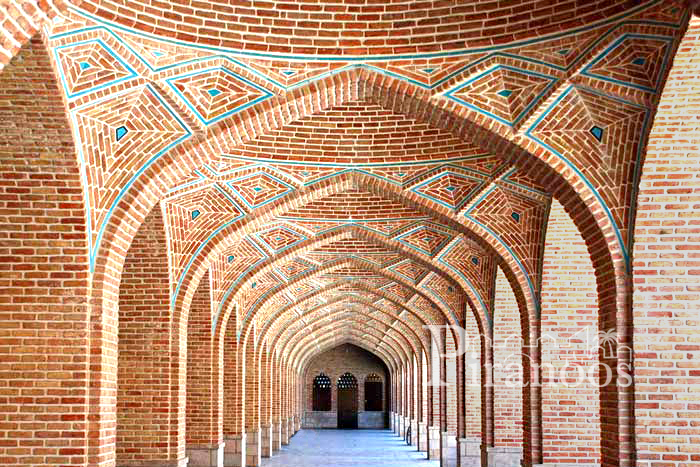Iran has many magnificent mosques; each of them is a masterpiece of art and architecture. One of Iran’s most magnificent and beautiful historic mosques is the Blue Mosque of Tabriz, a mosque that exhibits the amazing post-Islamic architecture in Iran and is one of the few blue mosques in the world. What made this place known as the Blue Mosque is the presence of azure tiles that created a special beauty for the mosque. It also has other names such as the Gouy mosque, Shah Jahan (or Jahanshah) mosque and Mozafarrieh mosque.
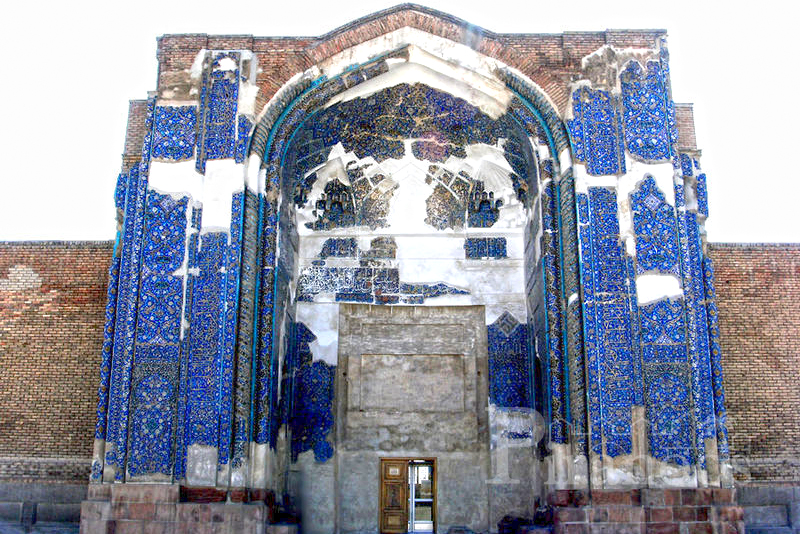
The Blue Mosque was built in the year 870 AH by the order of Abul-Muzaffar Jahanshah bin Qarayousef, who was the most powerful ruler of the Kara Koyunlu Turkmani dynasty. Jahanshah’s wife (Jaan Beygom Khatoon) or according to some researchers his daughter, supervised the construction of this mosque in the city of Tabriz.
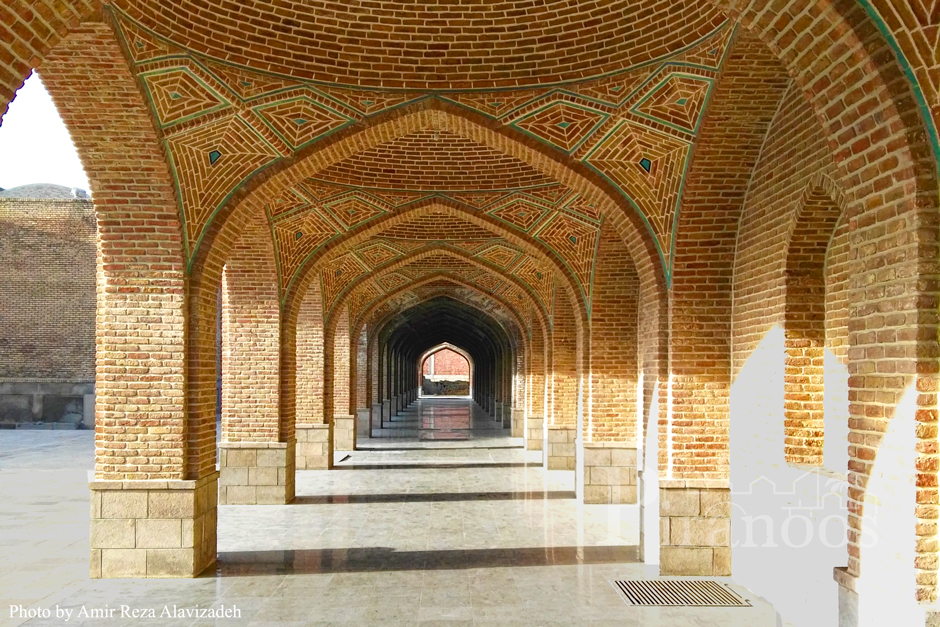
This mosque is one of the most prominent masterpieces of Islamic architecture and dates back to the ninth century AH and the variety and elegance of the tile work, as well as the beauty and harmony of the colors, especially the azure color of the mosaic tiles, have made it famous as the Turquoise of Islam world.
The building of the Blue mosque has been damaged by the earthquake of 1193 AH (1780 AD) and its domes have collapsed. The mosque remained in ruins for more than 150 years until it was partly rebuilt in 1318 AH.
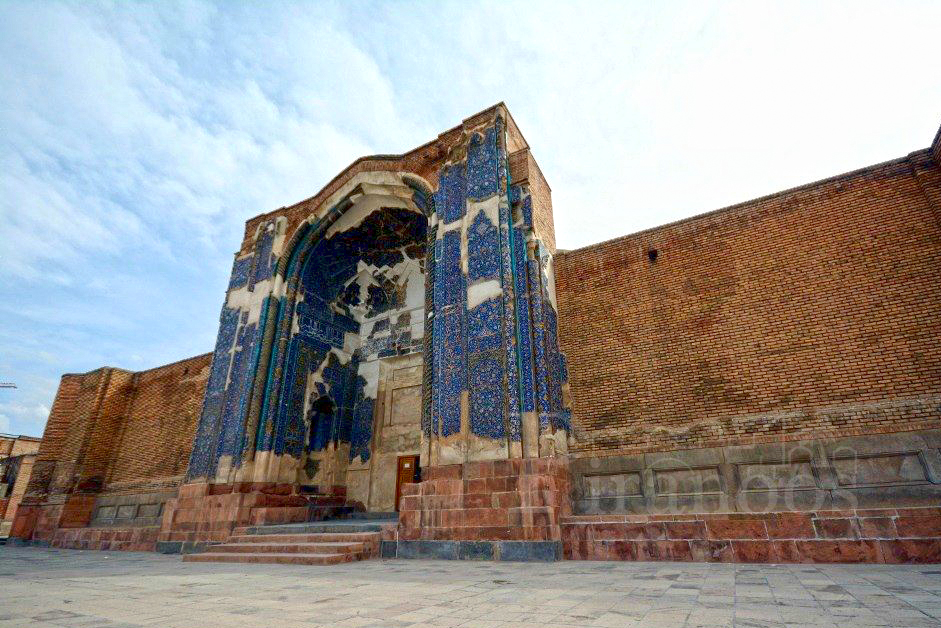
Apart from the antiquity and sanctity of the mosque, architecture is a masterpiece produced by the efforts of the best architects, calligraphers and artists. The art of Iranian, Azeri and Islamic architecture beautifully combined centuries ago that still attracts tourists from all over the world. The architecture is Azeri and because of the burial of Jahanshah and his wife in the mosque, it is also called a Bogh-e (mausoleum) and was one of the mosques that had several uses and is composed of various parts such as Sardar, Monare (prayer tower), Dome, Shabestan and the family tomb.
There are two domes in this building; the larger one is for the Shabestan and the smaller one is the tomb of Jahanshah and his wife, Jaan Beygom Khatoun. Its main dome was one of the largest domes of the ninth century AH which was destroyed by an earthquake. On the ceilings of the smaller dome there are inscriptions in Thuluth and Naskh calligraphy.
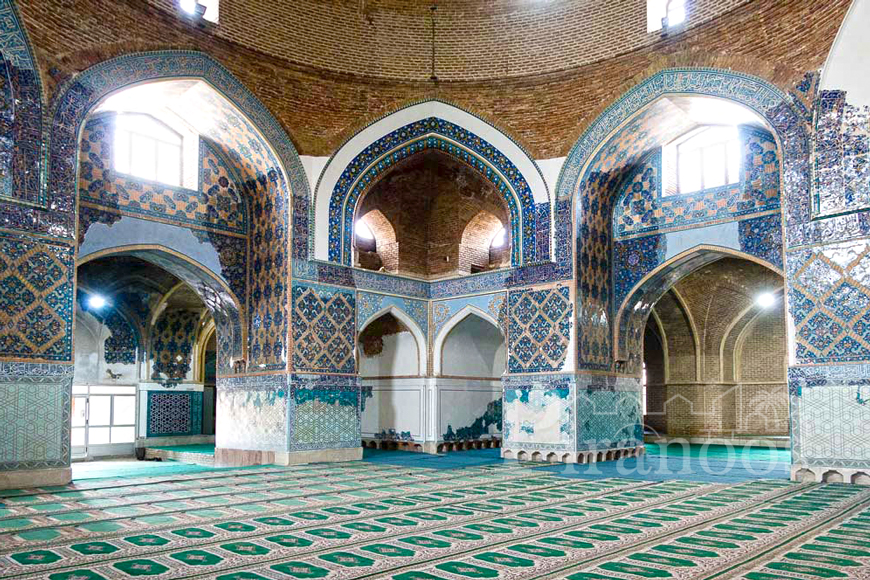
The mosque has a square courtyard, a large Howz for ablution, and beautiful Shabestans on either side. Around the mosque’s Shabestan there are interconnected Ravaagh (porches) with a beautiful vault roof that connects to the vaults of other porches. The reason for the Blue Mosque’s popularity is its enchanting blue tiles and unique decorations. Elegant mosaic tiles are artistically placed next to the bricks, creating a graceful masterpiece in the Islamic world.
The mosque was part of a historic complex called Mozafarieh, along with other buildings, such as the library, the Khanqah, the square, the gardens, the cemetery, the inn, the bath and the school.
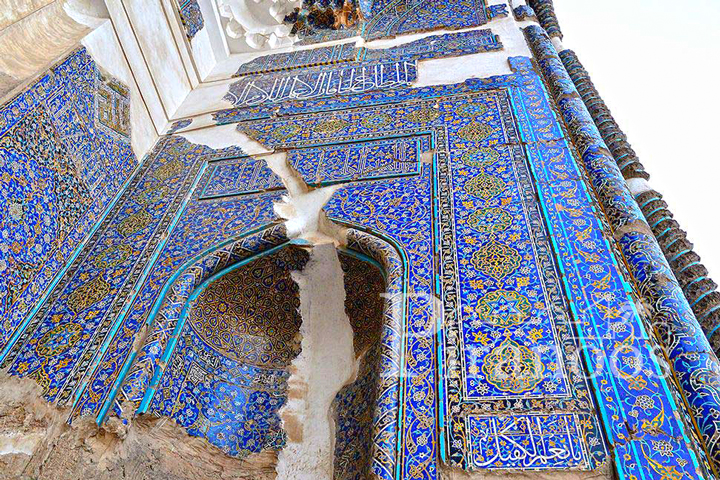
Perhaps today there is not much left of that magnificent building of the Blue Mosque but its azure tiles can still mesmerize you. The enchanting ceiling decorated with azure and gold is just part of the stunning beauty of the Tabriz Mosque.
But the unique architecture of the Blue Mosque is not limited to its beauty. The architect of the mosque has made it fully compatible with the climate of Tabriz and can be used in every season of the year.
